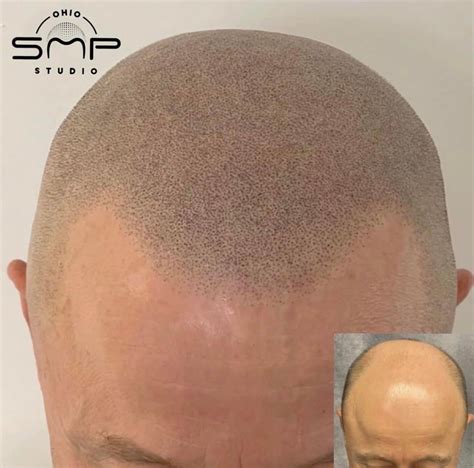Hair loss is an increasingly common concern affecting millions worldwide. As per the American Hair Loss Association, approximately 50 million people in the US alone struggle with hair loss. This distressing condition can result from various factors, including medical treatments, hormone imbalances, and genetics. For those seeking discreet and effective hair restoration solutions, wigs offer a remarkable option.

Types of Wigs for Hair Loss
1. Lace Front Wigs
These wigs feature a transparent lace that seamlessly blends with your skin tone, creating the illusion of natural hair growth. The lace is placed along the hairline, offering a realistic look and allowing for flexible styling options.
2. Monofilament Wigs
Monofilament wigs utilize a thin, mesh-like material that mimics the appearance of a scalp. The individual hairs are meticulously hand-tied onto this mesh, providing a natural-looking volume and scalp texture.
3. Synthetic Wigs
Synthetic wigs are made from artificial fibers, offering a range of styles and colors. They are lightweight, easy to maintain, and more affordable than human hair wigs.
Benefits of Wigs for Hair Loss
1. Restore Confidence and Self-Esteem
Hair loss can significantly impact self-confidence. Wigs empower individuals to reclaim their sense of self and restore their appearance.
2. Conceal Thinning or Bald Areas
Wigs effectively conceal thinning or bald areas, allowing individuals to regain their desired hair density.
3. Versatility and Style Options
Wigs come in a wide variety of styles, lengths, and colors, providing ample options to match personal preferences and complement any outfit.
4. Protect Scalp from Sun and Wind
Wigs act as a barrier, protecting the scalp from harmful UV rays and wind, especially after certain medical treatments that make the scalp more sensitive.
Common Mistakes to Avoid
1. Choosing the Wrong Size
Incorrect wig size can cause discomfort, shifting, and an unnatural appearance. It is crucial to measure your head circumference accurately before purchasing a wig.
2. Improper Application
Wig application requires careful attention to ensure a secure and natural-looking fit. Follow the manufacturer’s instructions or consult a professional hairstylist for proper placement.
3. Neglecting Maintenance
Wigs require regular care to maintain their quality and appearance. Regular washing, conditioning, and styling are essential to extend their lifespan.
Why Wig Quality Matters
1. Realistic Appearance
High-quality wigs utilize premium materials that provide a natural look and texture. The construction and detailing contribute to the overall realism and believability of the wig.
2. Comfort and Durability
Well-made wigs are designed with comfort in mind. They feature breathable materials, adjustable straps, and secure attachment methods. Additionally, durable wigs withstand regular use and styling, providing longevity.
Pros and Cons of Wigs for Hair Loss
Pros:
- Conceal hair loss effectively
- Restore confidence and self-esteem
- Provide styling versatility
- Protect scalp from environmental factors
Cons:
- Can be expensive
- Require maintenance
- May cause scalp irritation in some individuals
Creative Applications for Wigs
Beyond their primary purpose for hair loss concealment, wigs have also found innovative applications:
- Cosplay and Character Enhancements: Wigs transform individuals into beloved characters from movies, books, and anime.
- Fashion Statements: Wigs allow for temporary hair color changes, unique textures, and bold styling options, empowering fashion-forward individuals to express their creativity.
- Entertainment Industry: Wigs facilitate character transformations for actors, enhancing their immersion in various roles.
Tables for Further Insight
| Table 1: Wig Types and Key Features | ||
|---|---|---|
| Type | Lace Front | Monofilament |
| Material | Lace | Mesh |
| Appearance | Realistic Lace | Natural Scalp |
| Cost | Medium to High | High |
| Maintenance | Requires Skilled Application and Care | Low Maintenance |
| Table 2: Benefits of Wigs for Hair Loss | ||
|---|---|---|
| Benefit | Conceals Hair Loss | Restores Confidence |
| Impact | Covers Thinning and Bald Areas | Enhances Self-Esteem |
| Value | Improves Appearance | Empowers Individuals |
| Table 3: Common Mistakes to Avoid with Wigs | ||
|---|---|---|
| Mistake | Incorrect Size Selection | Improper Application |
| Impact | Discomfort, Shifting | Poor Fit, Unnatural Look |
| Prevention | Measure Head Circumference | Follow Manufacturer’s Instructions |
| Table 4: Wig Quality Matters: Impact and Benefits | ||
|---|---|---|
| Impact | Appearance | Comfort |
| High-Quality Wig | Realistic, Natural | Breathable, Adjustable |
| Low-Quality Wig | Unnatural Look, Poor Texture | Uncomfortable, May Slip |
